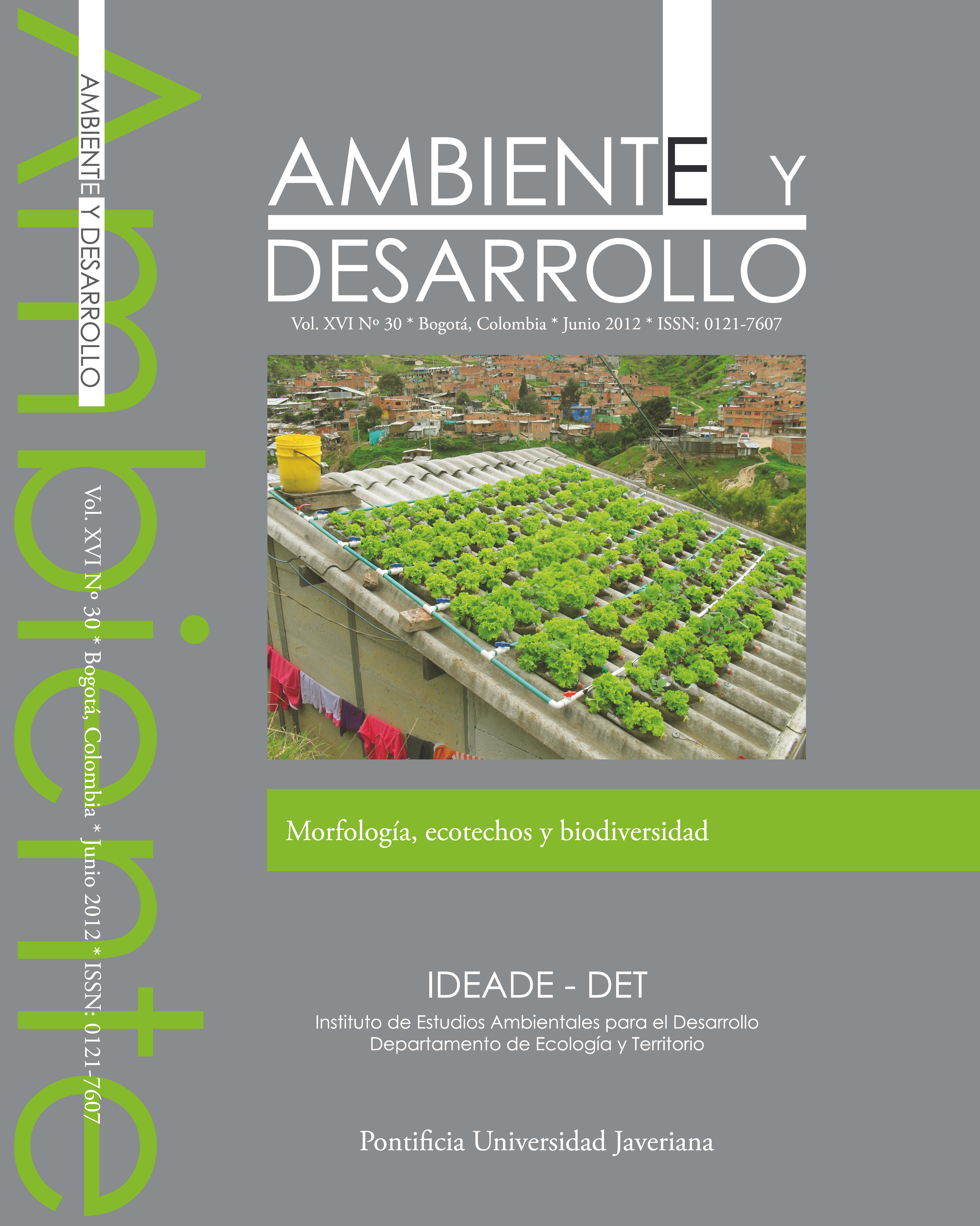Abstract
Se diseñaron e instalaron tres sistemas productivos de hortalizas en techos de viviendas de interés prioritario1 ubicadas en el sector de Altos de Cazucá. El objetivo de la investigación fue cuantificar las ganancias económicas y el aporte en hortalizas de los sistemas propuestos. Con este fin, se identificó el contexto de la realidad biótica del lugar (clima), la estructura física de las viviendas (resistencia) y la capacidad económica de los dueños de casa (capital mínimo para invertir). Los sistemas productivos instalados (tratamientos) fueron: (a) lechuga (Lactuca sativa) y rábano (Rhaphanus sativus), (b) cebolla larga (Allium fistulosum), cilantro (Coriandrum sativum) y lechuga (Lactuca sativa), (c) espinaca (Spinaca oleracea) y perejil (Petroselinum crispum). Durante el ciclo de vida del proyecto, dos años, las ganancias mensuales se compararon con el valor del Salario Mínimo Mensual Legal Vigente (en adelante SMMLV), con el resultado de un aporte de (a) 16%: $94.796; (b) 9%: $51.596; (c) 18%: $109.196. Estos sistemas permiten cubrir el 100% de la dieta en hortalizas de una persona diariamente; sin embargo, con las adecuaciones propuestas se podría alcanzar una ganancia de (a) 33%, (b) 18%, (c) 36%, respecto al SMMLV2, y de esta manera, suplir la dieta de tres personas.Ambiente y Desarrollo is registered under a Creative Commons Attribution 4.0 International Public License. Thus, this work may be reproduced, distributed, and publicly shared in digital format, as long as the names of the authors and Pontificia Universidad Javeriana are acknowledged. Others are allowed to quote, adapt, transform, auto-archive, republish, and create based on this material, for any purpose (even commercial ones), provided the authorship is duly acknowledged, a link to the original work is provided, and it is specified if changes have been made. Pontificia Universidad Javeriana does not hold the rights of published works and the authors are solely responsible for the contents of their works; they keep the moral, intellectual, privacy, and publicity rights.
Approving the intervention of the work (review, copy-editing, translation, layout) and the following outreach, are granted through an use license and not through an assignment of rights. This means the journal and Pontificia Universidad Javeriana cannot be held responsible for any ethical malpractice by the authors. As a consequence of the protection granted by the use license, the journal is not required to publish recantations or modify information already published, unless the errata stems from the editorial management process. Publishing contents in this journal does not generate royalties for contributors.


